 |
 |
 |
| |
IMPACT OF NASH ON THE SURVIVAL OF PEOPLE LIVING WITH HIV
|
| |
| |
CROI 2022 Feb 11-16
Juan Macias1,4, Antonio Rivero-Juarez2,4, Alejandro Gonzalez-Serna1,4, Mario Frías2,4, Marta Santos1,4, Ignacio Perez-Valero2,4, Anaïs Corma-Gomez1,4, Antonio Rivero2,4, Miguel Garcia-Deltoro3,
Luis M Real1,4, Juan A. Pineda1,4; GEHEP group from the Sociedad Española de Enfermedades Infecciosas y Microbiología (SEIMC).
1 Hospital Universitario Virgen de Valme, Seville, 2 Hospital Universitario Reina Sofia, Cordoba, 3 Hospital General de Valencia, Valencia, Spain. 4 CIBERINFEC
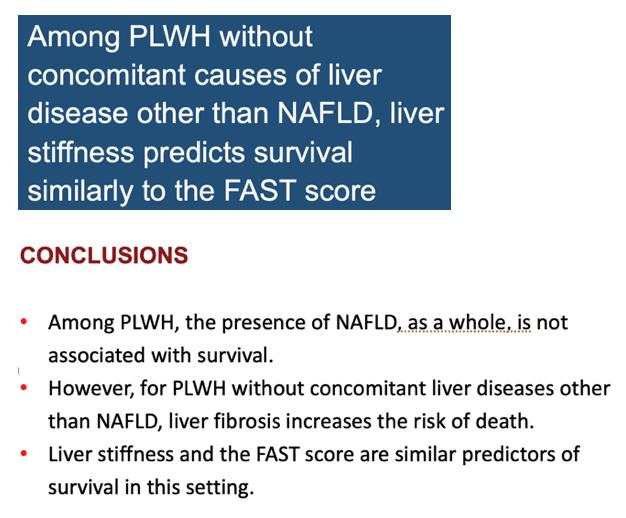
program abstract
Background:
Non-alcoholic fatty liver disease (NAFLD) is an increasing concern for PLWH. However, information on the impact of NAFLD on the prognosis of PLWH is lacking. Because of these, we investigated the influence of non-alcoholic steatohepatitis (NASH) on the overall mortality in PLWH.
Methods:
PLWH followed in three Spanish centers were included in a prospective cohort at the date when a vibration-controlled transient elastography (VCTE) evaluation, including controlled attenuation parameter (CAP) measurement was conducted for the first time. Clinical visits were scheduled, at least, every 6 months. Survival data was recorded, and the causes of death were centrally monitored. The risk of all-cause of death were evaluated applying time-to-event analyses. NAFLD was defined as steatosis (CAP ≥248 dB/m) without any other liver disease. Cirrhosis was defined as liver stiffness measurement (LSM) ≥10.3 kPa for NAFDL (Wong. Hepatology 2010). The FibroScan-AST (FAST) score (Newsome. Lancet Gastroenterol Hepatol 2020), which includes AST, CAP and LSM was calculated.
Results:
1570 PLWH were included in the cohort and followed for a median (Q1-Q3) of 63 (22-100) months. There were 61 (3.4%) deaths. The main causes of death were: Liver-related, 22 (36%); cancer, 15 (25%); AIDS, 8 (13%); cardiovascular, 6 (9.8%); non-AIDS-related infections, 5 (8.2%); other, 5 (8.2%). Overall, cirrhosis was identified in 94 (14%) PLWH, and FAST score value was ≥0.67 in 156 (10%) PLWH. Among 614 PLWH without other concomitant liver diseases, NAFLD was observed in 248 (40%) of them. Steatosis was not associated with overall mortality. For PLWH with NAFLD, the higher LSM, the lower the probability of survival (Fig 1A). FAST score ≥0.67 was also associated with a lower likelihood of survival in PLWH with NAFLD (Fig 1B). After adjustment by variables related with survival, LSM was associated with increased all-cause mortality [adjusted hazard ratio (HR), by 1 kPa increase: 1.05; 95% confidence interval (95% CI): 1.01-1.09; p=0.047]. In a separate model and after adjustment for predictors of death, FAST score ≥0.67 was also related with a higher risk of death (Adjusted HR: 11.03; 95% CI: 2.6-49.8; p=0.001). Similar results for LSM and FAST were found for the overall cohort (Fig 1C-1D).
Conclusion:
Among PLWH, NAFLD, as a whole, is not associated with survival. However, when liver fibrosis coexists, the risk of death increases in parallel. Accordingly, both LSM and the FAST score are predictors of survival in this setting.
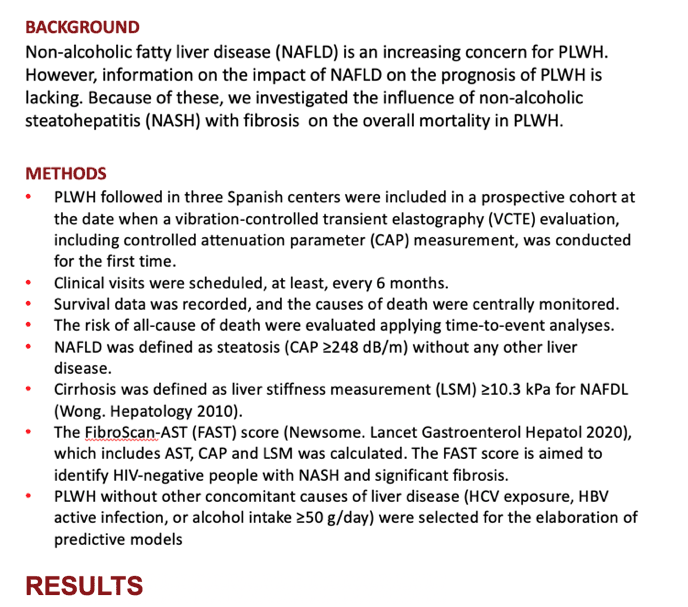
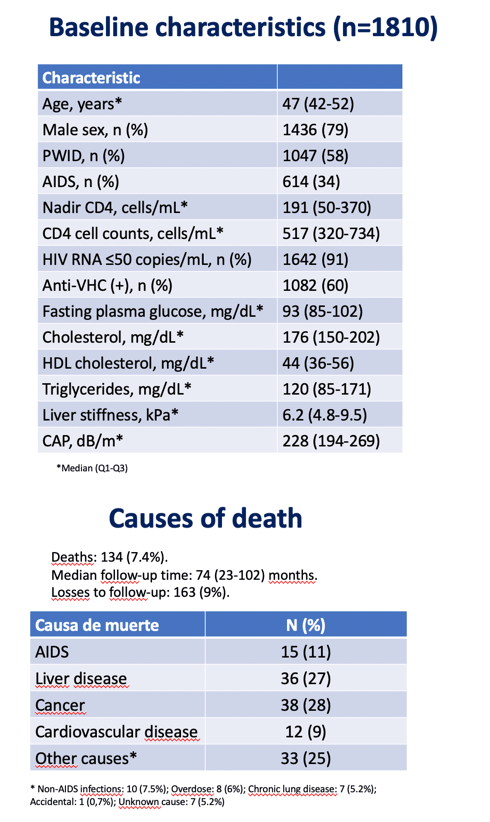
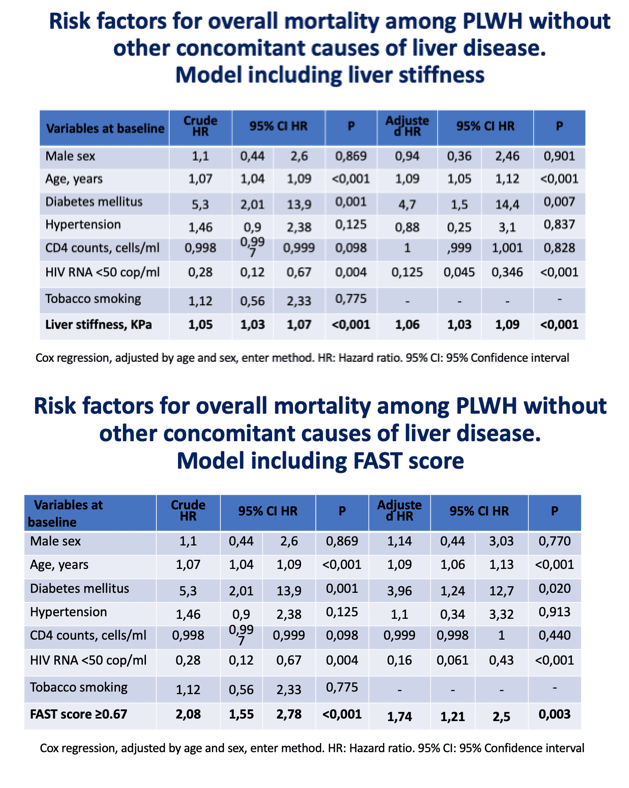
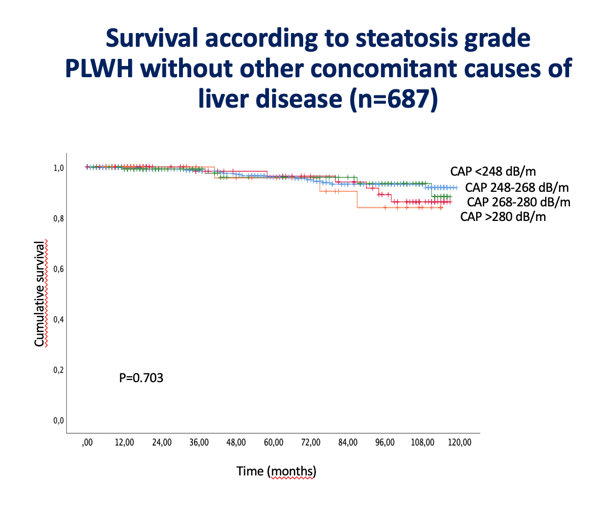
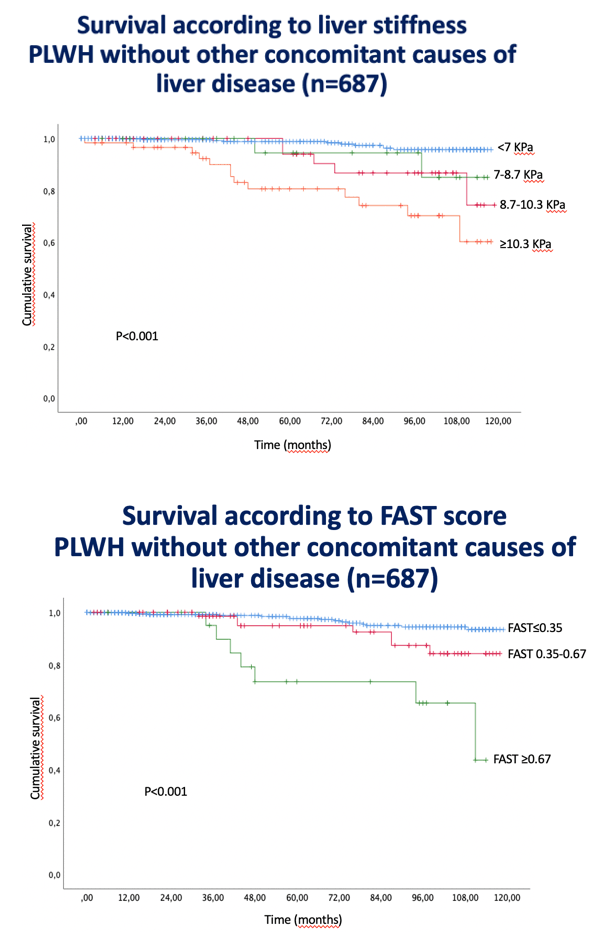
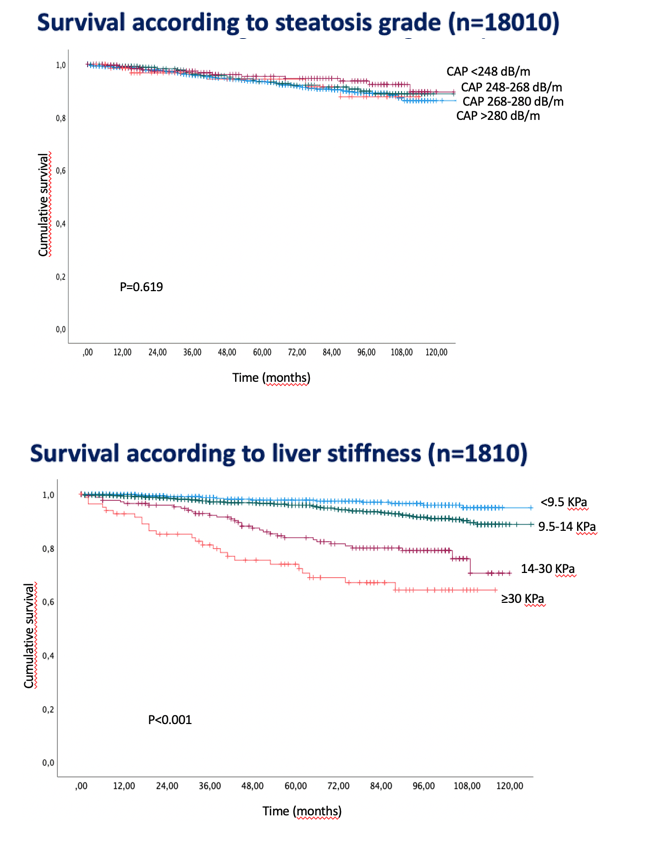
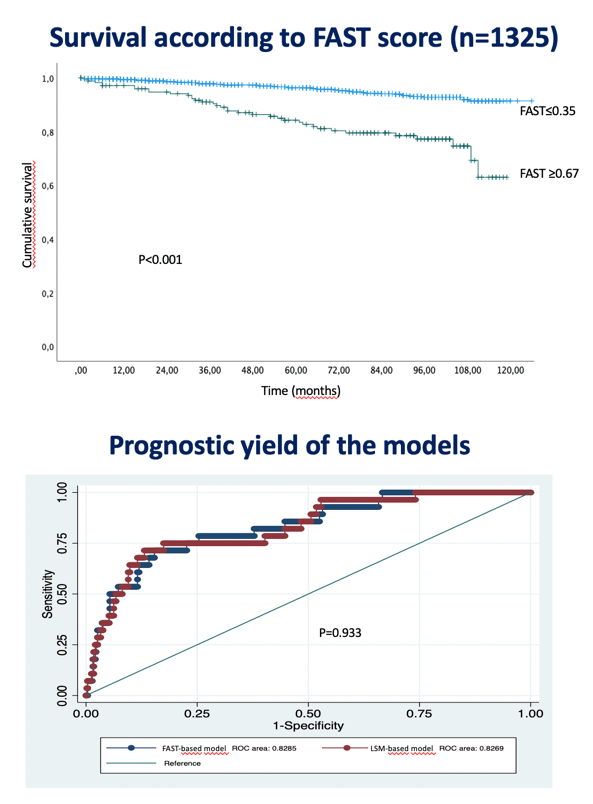
ADDITIONAL KEY INFORMATION: Funding: This work has been partially funded by the Fondo de Investigaciones Sanitarias (grant no: PI15/01124). Contact information: Dr. J. Macías. Unit of Infectious Diseases and Microbiology, Hospital Universitario Virgen de Valme, Avda Bellavista s/n. 41014-Seville, Spain. email: juan.macias.sanchez"at"gmail.com
|
| |
|
 |
 |
|
|